Blog
8 January 2025
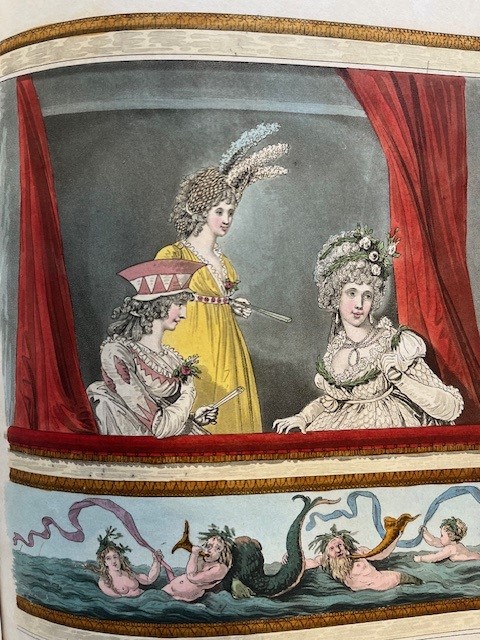
Nikolaus von Heideloff, ‘The Gallery of Fashion’ (1794-1802): ‘Opera Dress’, June 1796
As those jumpers emblazoned with reindeer and Santas are mothballed again for another year, and as retailers report ever-declining sales of suits, ties and formal shirts (due partly but not entirely to ‘Working from Home’), Emmanuel’s Graham Watson Collection of illustrated books witnesses to almost unrecognizably different assumptions about clothes, the wearing of which were governed by conventions of formality and decorum.
Most formal of all was the court dress required when wives and daughters of peers and the landed gentry were presented at court. By the second decade of the nineteenth century this had become fossilized into the fashions current fifty years before, because Queen Charlotte resisted any change to the old ways. Dress for women was an outfit with a very wide-hooped petticoat, a train, and ostrich feathers in the hair.
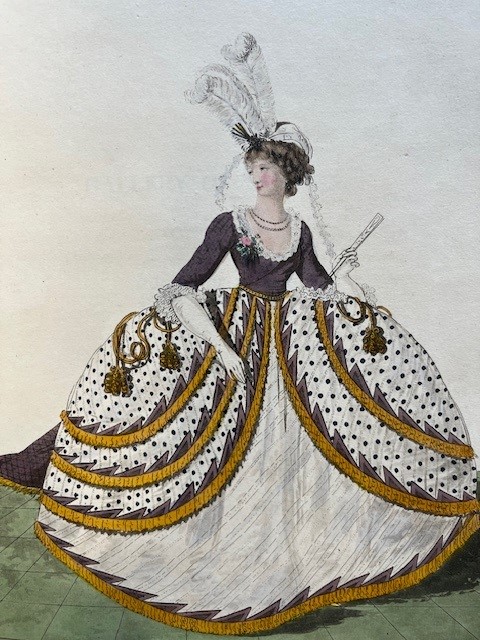
‘Gallery’, ‘Court Dress’, July 1796 and February 1796
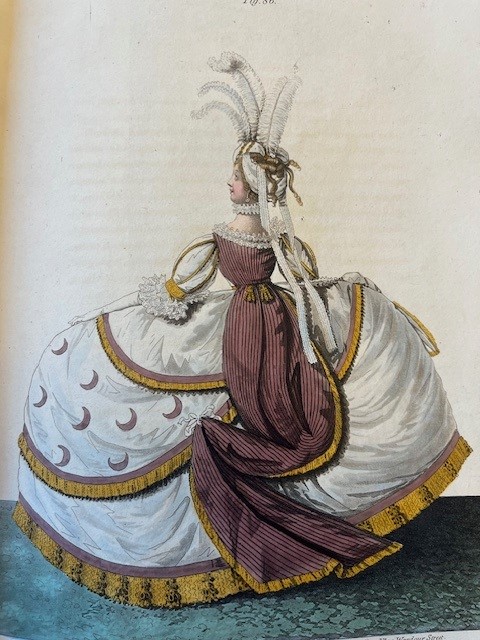
Presentations were fraught occasions (fraught too for ostriches perhaps), entailing standing for hours and, after being presented, walking backwards out of the room while trying not to trip over one’s train (one could not turn one’s back on the Queen). British court dress of the period for men is the ancestor of some traditional attire of the judiciary.
Another formal observance manifested through clothing, which became progressively more widely observed, was that of mourning.
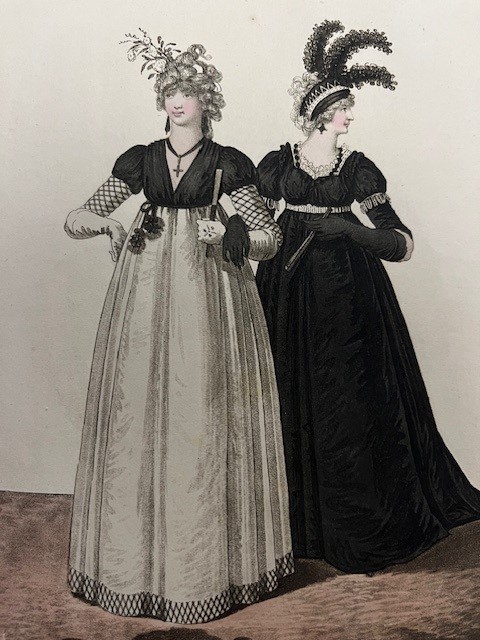
‘Gallery’, ‘Mourning Dress’, January 1797
In the earlier nineteenth century mourning practice was not yet as codified as it later became once the widowed Queen Victoria adopted mourning as a vocation and lifestyle. Periods of mourning were as yet more flexible and open to individual discretion, but already some of the expected durations of mourning were broadly in place. Widows and widowers were to mourn for a year and a day. For a parent or child, mourning was six months to a year. For a sibling, three to six months. For a grandparent, six months. For aunts and uncles, three months. For a first cousin, six weeks. For a second cousin, one week. Considering the fragility of life at the time, people could easily spend a good proportion of their time in mourning, and mourning was also worn for members of the Royal Family. However, there was the useful gradation of ‘half-mourning’ in attire, into which one might move for the latter part of the mourning period.
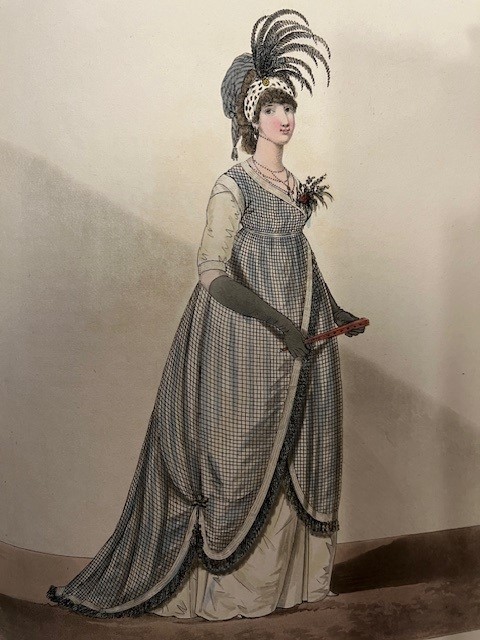
'Gallery’, ‘Half-Mourning Dress’, May 1798
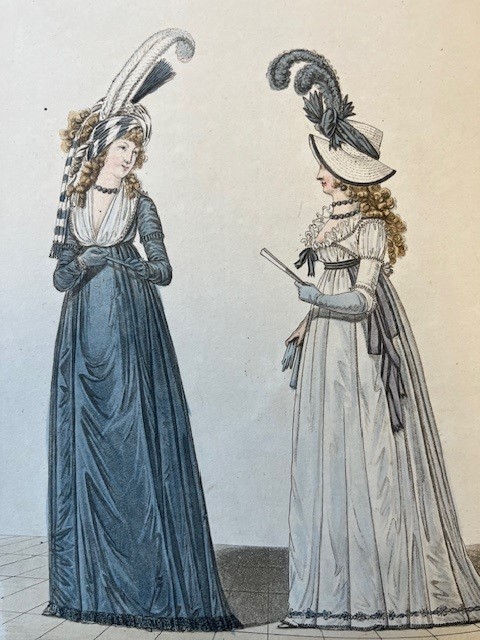
‘Gallery’, ‘Mourning Dress (left) and Half-Mourning Dress (right)’, August 1794
Although black with some allowable white characterized full mourning (with no jewellery except jet), the concept of half-mourning allowed a transitional period when clothes in lavender, grey, brown, and black and white mixtures were allowable (and pearls and amethysts might be worn).
Only the affluent, of course, could afford the outfits in the fashion plates, but such publications made images of such mourning fashions available to be imitated throughout the country in amateur dress-making. Jane Austen’s letters indicate how much improvisation and make do and mend went on regarding the observance of mourning through attire in genteel circles in Hampshire.
Many fashion plates illustrate what are termed ‘Morning Dresses’, though these do not define a specific design, only the time of day they might be worn, since mornings were for such different activities as walks, visits to shops, and church services.
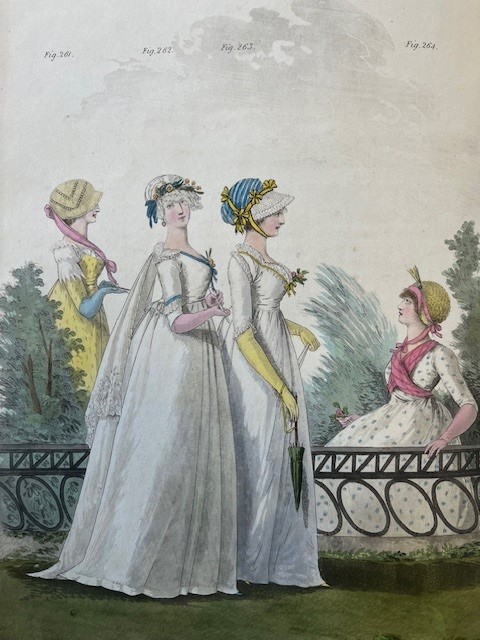
‘Gallery’, ‘Morning Dresses’: June 1800
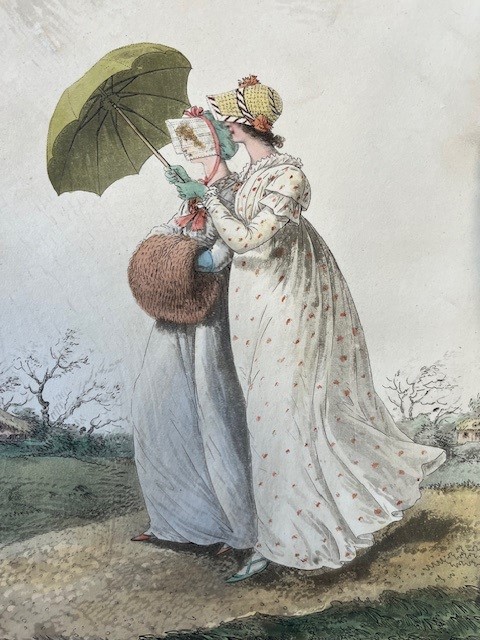
October 1801
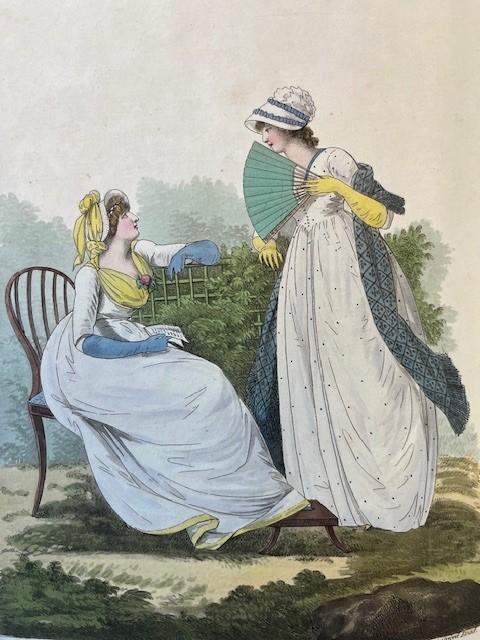
August 1799
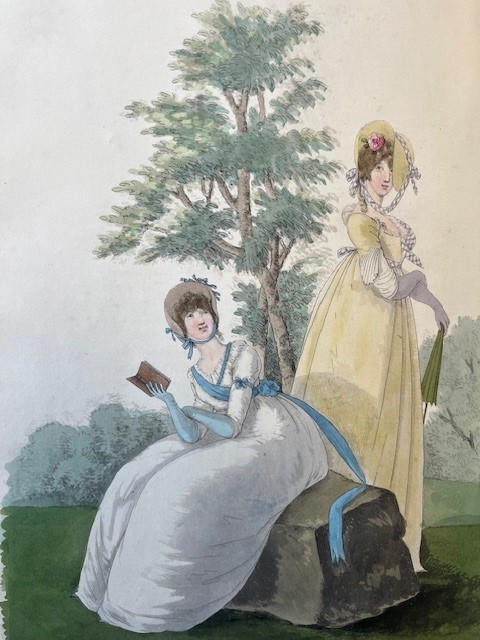
July 1800
Mornings were also for down time at home, in accordingly simple attire, very often in white. (The wider fashion for white may go back to a white dress worn by Marie Antoinette in the 1780s which, in its very simplicity and lack of ornament, was considered risqué). Afternoons were for the paying and receiving of formal calls, with clothes to match.
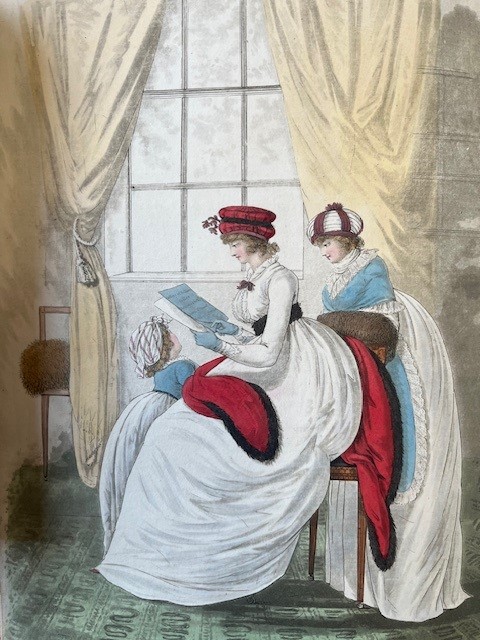
‘Gallery’, ‘Morning Dress’, August 1799
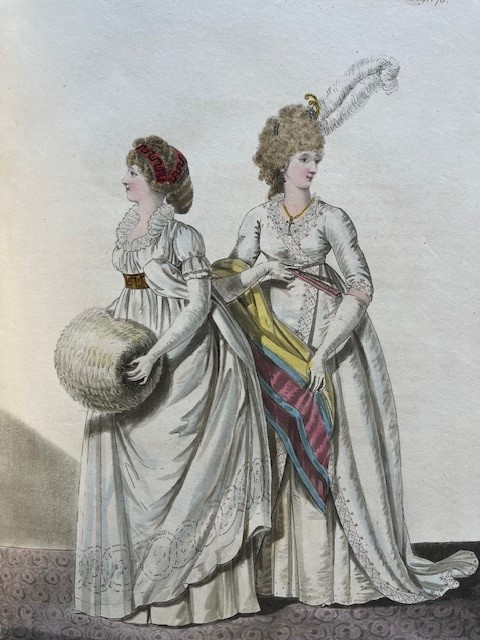
‘Gallery’, ‘Afternoon Dress’, March 1798
There were also fashionable outfits for going riding, and for such evening occasions as operas and concerts.
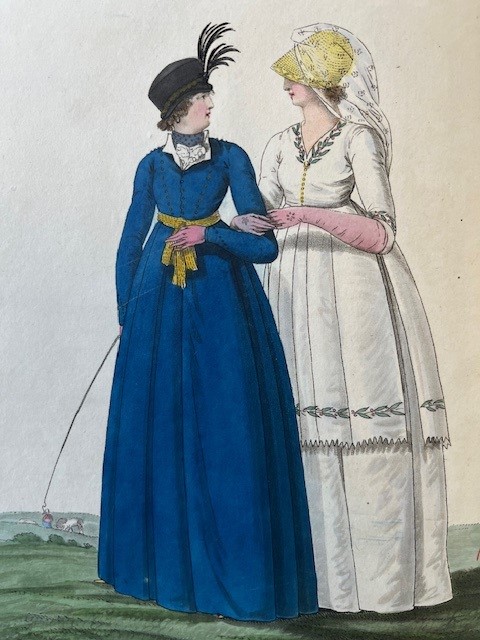
‘Gallery’, ‘Riding Dress’, June 1799
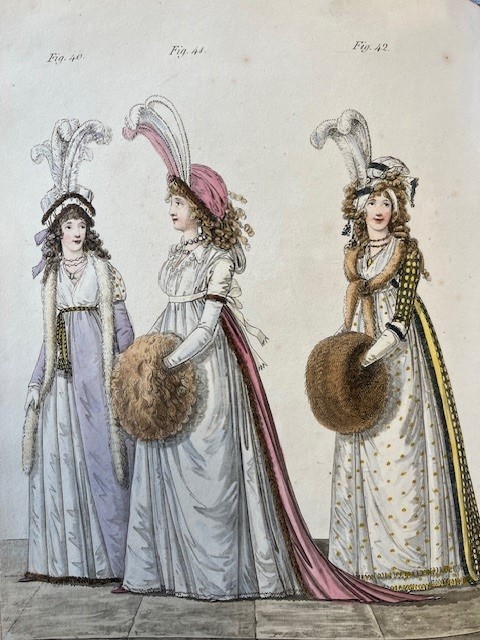
‘Gallery’, ‘Evening Dress’, June 1795
To a modern eye all these Regency fashions exemplify extremes of the very high or ‘Empire’ waistline, associated with the Empress Josephine. Fashionable waistlines were actually at their highest between 1816 and 1819, but most fashion plates of the whole period exaggerate for effect the drop between waistline and floor.
All the aquatint plates in this blog are from the preeminent fashion plate book of the age, The Gallery of Fashion, issued in monthly instalments between 1794 and 1802.
It was the work of Nikolaus von Heideloff (1761-1839), born in Stuttgart and trained as an engraver. As a young man he worked in Paris painting portrait miniatures, but moved to London at the French Revolution. The hand colouring of his plates is exceptionally refined.
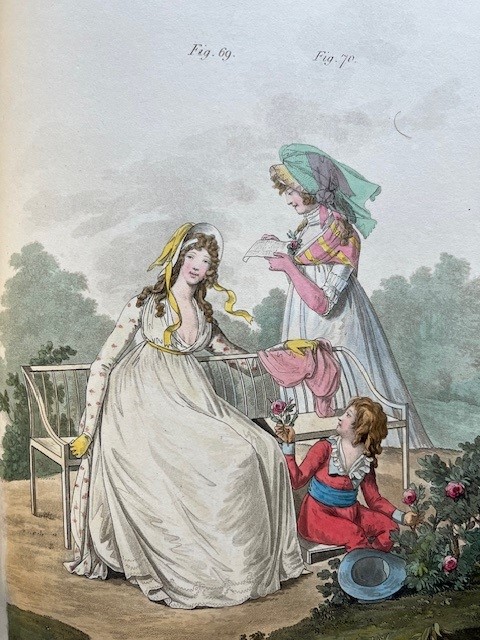
‘Gallery’, ‘Morning Dress’, June 1798 (the display of cleavage is unusual in contemporary English fashion)
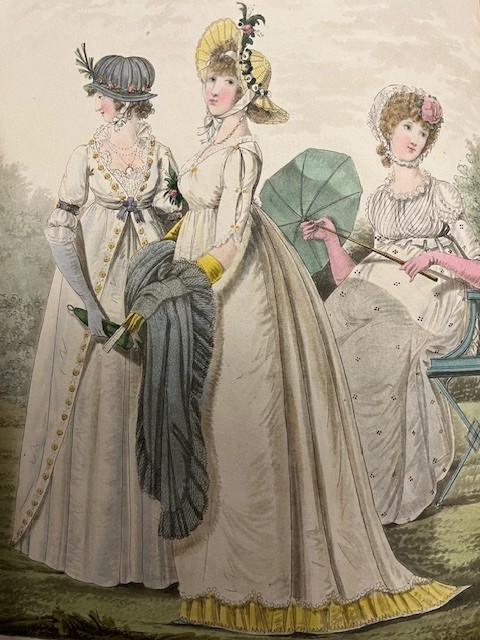
Heideloff claimed that the garments depicted ‘are not imaginary but really existing ones’ and as such form ‘a Repository of English National Dresses of Ladies’. In this present age of willed slovenliness it can seem like a lost world of elegance.
Barry Windeatt, Keeper of Rare Books
